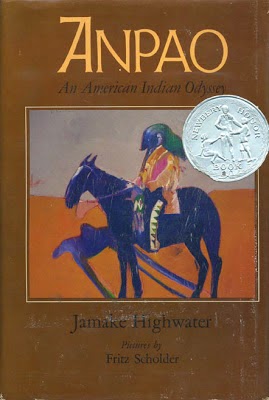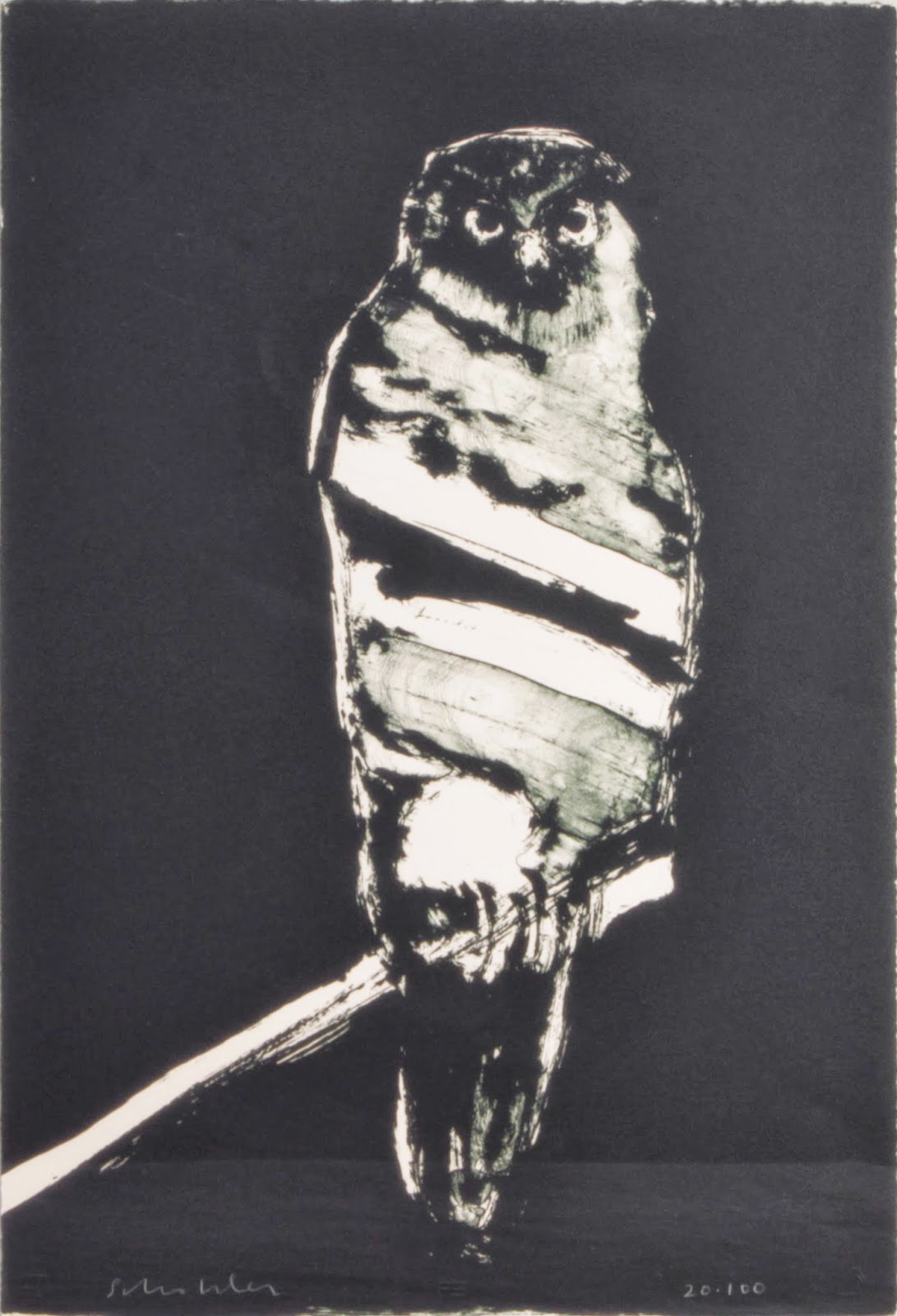Fritz Scholder's Anpao Suite
March 27, 2014
Fritz Scholder has been lauded as one of
the great American painters of the 20th century. One
quarter Mission Luiseño, he questioned Native American identity and representation in
both art and society.
His dark, energetic and often
unsettling depictions of Native Americans combined realism, tragedy, and
spirituality with the genres of abstract expressionism and pop art. The
Smithsonian National Museum of the American Indian in both New York and
Washington, D.C. recently exhibited a landmark retrospective of his iconic
works.
We feel lucky to have recently acquired Scholder’s Anpao Suite, featuring an owl, bat, buffalo, and death. Surrounded by a dark and desolate background, each subject is enveloped in mystery while expressing a sense of turmoil from within. These striking lithographs showcase these enigmatic white figures against a background of black mixed with a subtle hint of blue.
 Scholder originally created these pieces
as a collaboration and illustration for the award-winning novel Anpao,
by Jamake Highwater. Highwater was later discredited for presenting himself
as Native American, and his heritage was called into question. Anapao
Suite does, however, remain significant as this was the first time Scholder was
asked to illustrate a novel. Anpao
garnered serious attention and went on to win several prestigious awards before
the full controversy came to light.
Scholder originally created these pieces
as a collaboration and illustration for the award-winning novel Anpao,
by Jamake Highwater. Highwater was later discredited for presenting himself
as Native American, and his heritage was called into question. Anapao
Suite does, however, remain significant as this was the first time Scholder was
asked to illustrate a novel. Anpao
garnered serious attention and went on to win several prestigious awards before
the full controversy came to light.
Scholder created the the Anpao images to compliment, but not visually recreate the story. Also
designing the original cover for the novel, he did not intend for these
pieces to be a mirror image of the storyline. He describes, “The
lithographs were done with the narrative fresh in my mind. The images are not
literal, for that is the purpose of the text. For me, the owl, the buffalo, the
bat, and death are mysterious and magical subjects” (256, Anpao).
Mysterious and magical subjects were a forte of Scholder, who cited Spanish painter Francisco Goya as a strong
influence on his work. While not necessarily a direct interpretation, the imagery in Anpao
Suite is very likely an allusion to Goya’s The Sleep of Reason
Produces Monsters, considered to be a classic in the realm of art history,
and has been frequently cited by generations of famous artists.
In Fritz Scholder, William
Peterson, founding editor of ArtSpace Magazine, relates formal elements and
techniques used by both Scholder and Goya, as well as specifying some of their
similar underlying themes. Notably, both artists use a strong
contrast between light and dark with course texturing, as well as a bold
execution with a sense of spontaneity.
He notes that the psychological turmoil explored in Goya’s work is also
examined within Scholder’s framing of Native American representation. He
observes,
The Indians
largely became Scholder’s symbol of human existence under compromised
conditions and allowed him to examine the human capacity to either cope with
the pressures of the psychic split – or crash out. Like Goya, Scholder
understands that monsters are creatures of repression and the sleep of
reason. (114)
One of the more fascinating components of
Scholder’s work is his ability to communicate an unapologetically updated and
non-stereotypical Native American experience. The ridiculous and often
grotesque results he highlighted in his paintings were a way of communicating
the adverse pressures placed upon Native Americans in both art and
society.
In an August 1975 issue of Arizona Highways, journalist Marjel De Lauer wrote, “[Scholder] felt that the limitations
and restrictions that had been imposed on Indian artists by many Anglo teachers
in order to keep the art pure, had also kept it from having any measure of
greatness” (15). The pressures of the art world also reflected the
strain placed on Native American culture throughout US history. Scholder
chose to reject the pressure to present this "pure" or stereotyped
imagery in his work, and encouraged others to do the same.
Anpao Suite is a prime example of
Scholder’s iconic style, illustrating his ability to blend different references
and worldwide influences into his own voice and message. Like his
larger body of work, these four figures illustrate a powerful story of the
unconscious.








0 comments